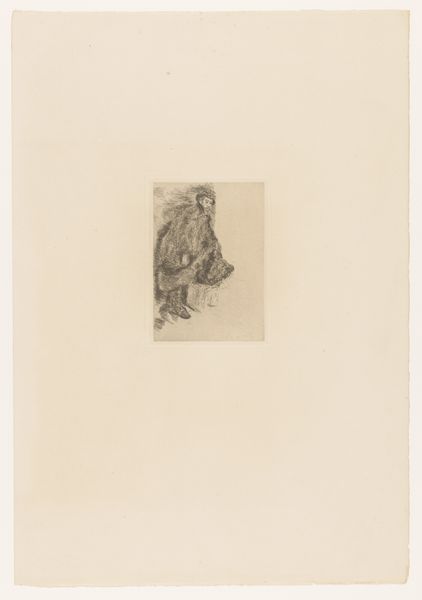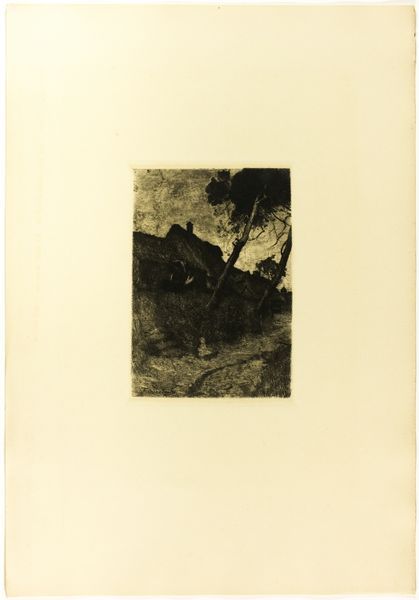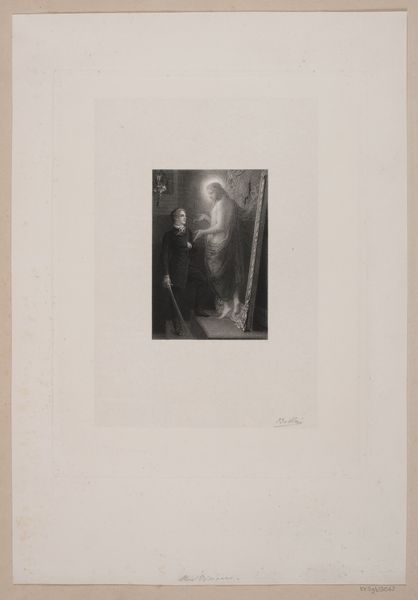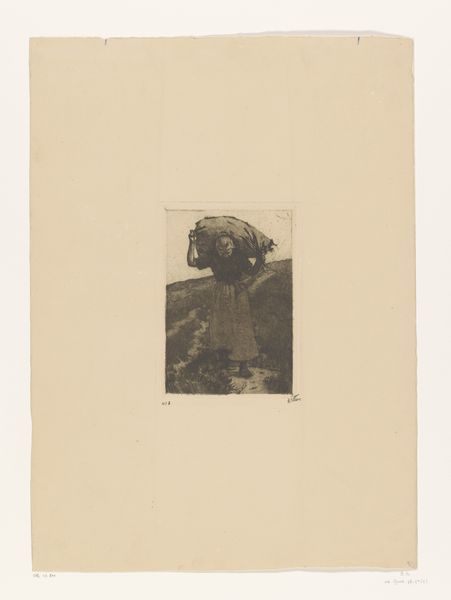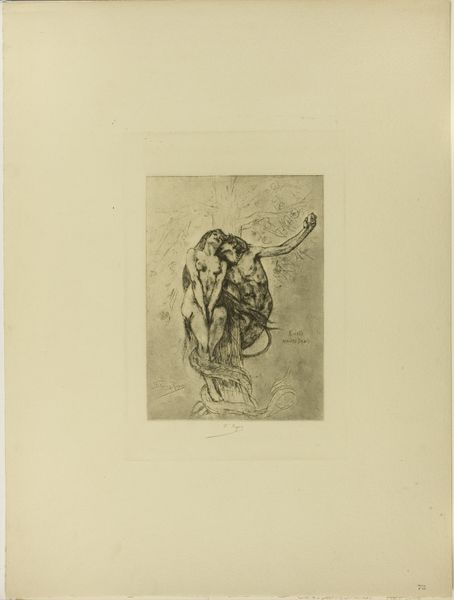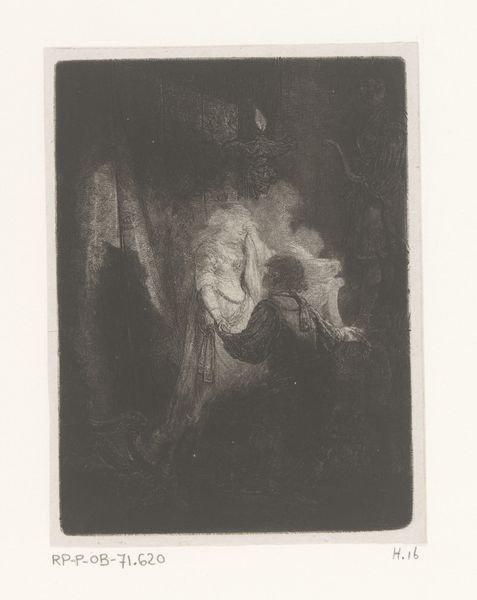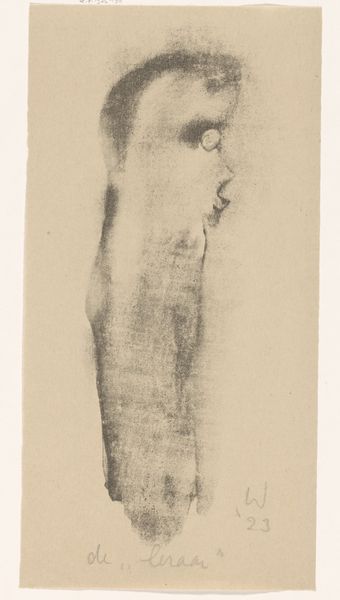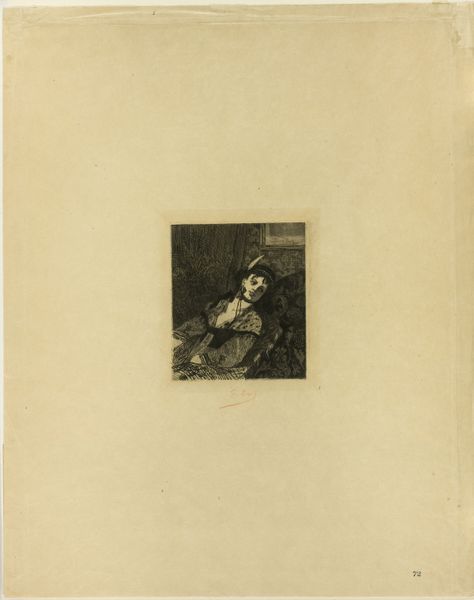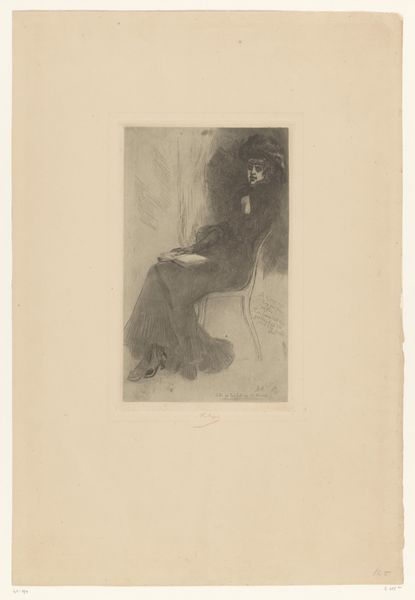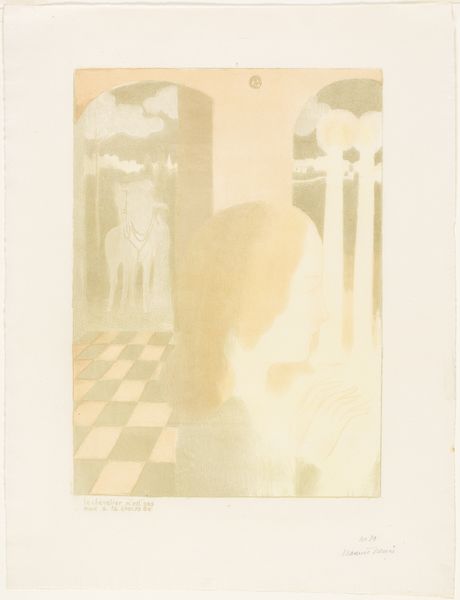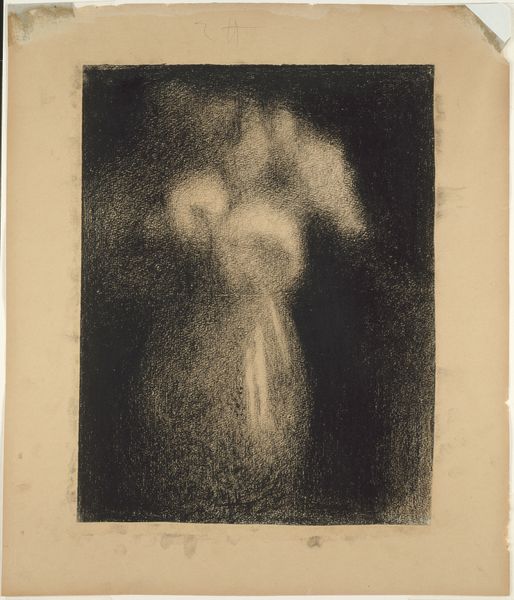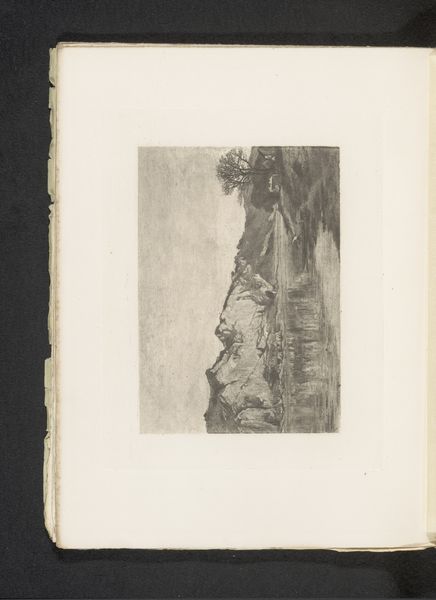
drawing, print, etching, paper
#
portrait
#
drawing
# print
#
etching
#
paper
#
symbolism
#
erotic-art
Dimensions: 227 × 171 mm (image); 287 × 207 mm (plate); 417 × 319 mm (sheet)
Copyright: Public Domain
Editor: Here we have Félicien Rops' 1876 etching "Woman with a Carcel Lamp." The stark contrast and somewhat blurred details give it an air of mystery. What formal elements strike you most in this work? Curator: The composition directs our gaze immediately to the figure's face, doesn't it? Notice the strategic use of light and shadow. The Carcel lamp illuminates her features, casting the rest of her form into suggestive darkness. The artist uses chiaroscuro to generate this dramatic tension. Consider, also, the very texture achieved through the etching process; the lines themselves communicate a certain anxiety and intensity. Editor: That's a keen observation about the texture. I was so focused on the subject that I missed the nuances of the medium. Are the dark areas created by multiple, layered lines? Curator: Precisely. Observe how Rops varies the density and direction of the etched lines to create the illusion of depth and volume. Where the light strikes, the lines are sparse, almost absent. This contrast isn't just representational; it generates the feeling, as you mentioned earlier, of mystery. It emphasizes, doesn't it, the very materiality of the print itself? Editor: So, you're saying the technique itself contributes to the work's overall symbolic meaning? Curator: Indeed. The formal elements – the line, light, and composition – become integral to interpreting the subject and mood, as they enhance the viewer’s experience beyond simple representation. This piece invites us to look beyond the surface and into the very structure of meaning-making. Editor: I never considered etching to have such expressive potential. It gives me a lot to consider! Curator: Art reveals itself through sustained attention to these interwoven elements.
Comments
No comments
Be the first to comment and join the conversation on the ultimate creative platform.
